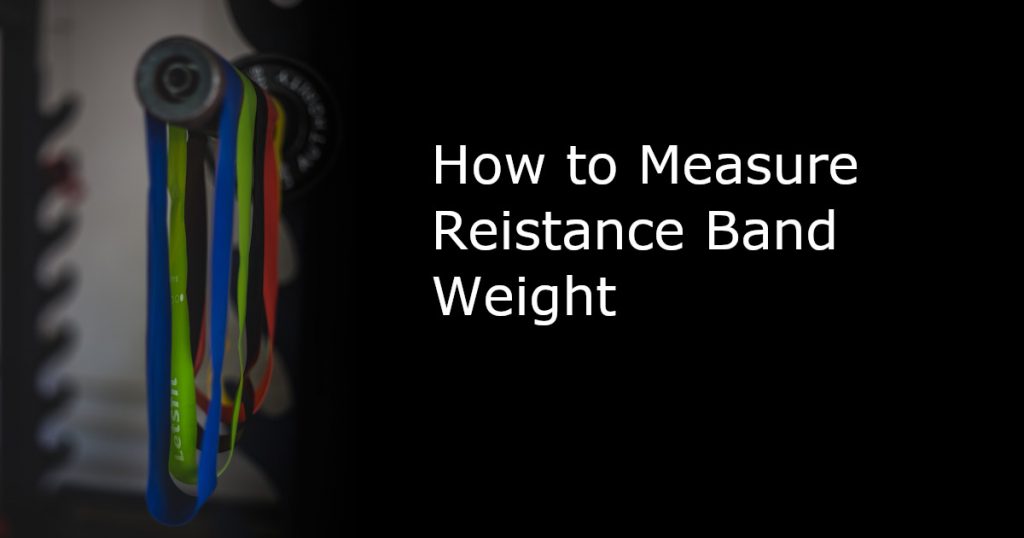We like to meet you where you are in your fitness journey, and we can tell you that resistance bands are an addition to your workout regimen that you need!
Resistance bands offer several benefits to your training and you will need to know how you measure band weight to get the right workout.
Variety, flexibility, portability, pull-ups, and more. That said, it does get a bit complicated when measuring resistance band weight.
Got an old thick band?
How is the band set up?
How much do you weigh?
We take all of these factors into account.
And – if you are asking yourself, do resistance bands really work? The answer is an absolute yes.
Contents
How do I measure resistance bands?

First of all, it is important to know that there are indeed different strengths to resistance bands.
Resistance bands have different purposes and work out different areas of your body.
There are ways to measure resistance bands if you are not so concerned about precision, but if you are, the best way is to use a fish weighing scale. This is the best possible way to measure an accurate result on the weight of the resistance band.
Let’s get to it, to measure, first, set up your resistance band in the manner in which you intend to use it.
For example, if using it as assistance while doing a pull-up, set it up as such and pull it down as far as you can from there.
Tape the point of maximum stretch at the furthest point down (this will determine where you should stop pulling the scale).
Now use the fish scale to pull the resistance band to the point where the piece of tape is. This should give you the most accurate weight number of the resistance band.
If you aren’t that concerned and don’t want to buy the scale – you can always use the dumbbell method.
This is when you set a dumbbell on the ground and wrap the resistance band around the handle. From then, you try to lift up the dumbbell by way pulling the resistance band. If the dumbbell comes off the ground easily, then you know the resistance band weighs more than the dumbbell. If the dumbbell does not come off the ground, then the resistance band weighs less than the dumbbell. Try and find a dumbbell that is close to the weight of the resistance band. Just by feel. With that, you can just play around with a few resistance bands.
In reality, it is not an absolutely necessary to know the exact weight of the resistance band but it is important to have an estimate.
You can do this just by eyeing and feeling your resistance bands.
You should be able to know which ones are stronger and which ones are weaker.
Most of the time, the thicker bands tend to be the stronger ones and the thinner ones are not as strong and do not provide as much resistance.
Longer, thinner bands tend to be used more for upper body workouts:
Bench press or stretching exercises that involved spreading your arms apart while using a resistance band.
Whichever method you choose in measuring the strength and weight of your resistance bands, all bands are useful in one way or another and you are gaining more strength by using them!
Do resistance bands really work?
An athlete I know who has exercised with many trainers in CrossFit – he states,
“I’ve used resistance bands a lot. Two days ago, I used resistance bands in a killer leg workout and it was one of the best workouts I’ve ever done. I used heavy and light resistance bands with wall-sits, goblet squats, and glute circuits and I could barely finish the workout. My glutes were on fire and so numb I could barely lift my legs up. Now, my glutes, quads, and groin are still extremely sore. I love training with bands.”
Resistance band training is a complement to your already existing fitness routine.
Why should I use resistance bands?

Resistance bands not only work but are essential to a good training program. Resistance bands can really add strength to the body alone or combined with weight training. Whether it’s strength training or stability work, resistance bands are necessary because they provide a different way of training your body.
Variety is key to any training program right?
Throw in resistance bands to your workouts, you will see fast results and feel better than ever!
They can be used for your lower and upper body of course.
I recommend using light, moderate, and heavy bands in a variety of ways.
Be creative with them!
They’re fun to use, safe, and they help prevent you from injury! In fact, many athletes use bands to rehab their shoulders or lower back after injury because they provide a different type of stress on the muscle. Resistance bands are the recipe for success in both the weight room and in life!
Conclusion
If you are interested in using resistance bands I hope you found this useful!
Whether you feel the need to measure resistance bands or not, they will help you strengthen your body or if need be, help recover your muscles after an injury.
Resistance bands are useful for not only working out but warming up your muscles before a run or lifting heavy weights. Many pro athletes count on resistance bands to improve their strength.
Consider resistance bands next time you are purchasing fitness equipment — they are light and not very costly. You can even purchase customized resistance bands of different materials. Resistance bands should be your next move!


